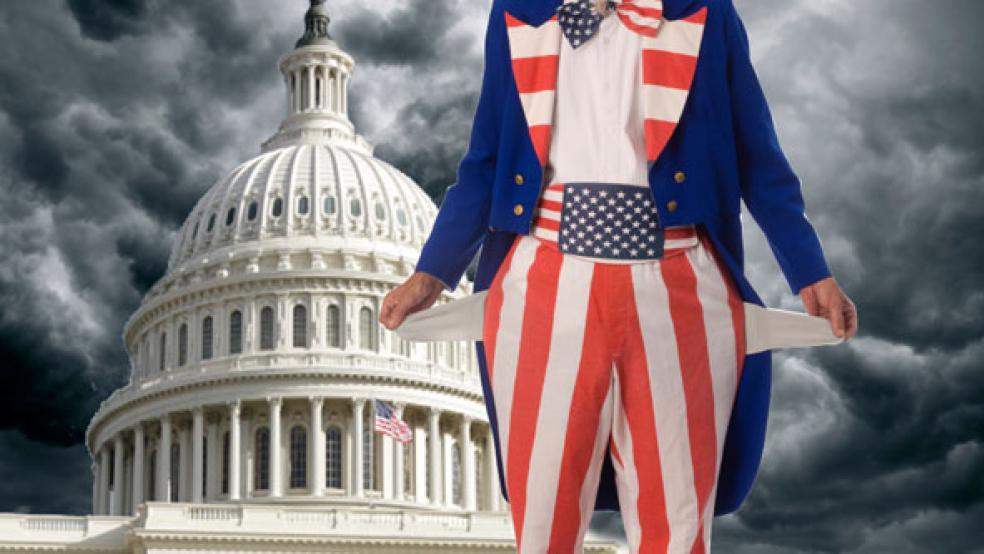Talk about the so-called fiscal cliff has been shifting lately, away from the potential negative effects when a number tax cuts expire of toward the idea that this is a potential opportunity to overcome gridlock on the tax issue by, in effect, turning a tax increase into a tax cut.

For some time, the fiscal cliff has mainly looked like a political winner for Republicans insistent upon full extension of all the Bush era tax cuts. They believe, not without reason, that President Obama will never let the fiscal cliff happen for fear of what it might do to the economy. Therefore, Republicans need only bide their time and wait for him to capitulate and accept their demand for all-or-nothing, as Obama did in 2010.
Obama has been in a politically weak position all along because his view is that the Bush tax cuts should be extended for everyone except those with incomes over $250,000.
The first problem is that Obama’s option requires positive action by Congress. Given Republicans’ control of the House of Representatives and their obsessive opposition to higher taxes on anyone, but especially the rich, this was always a non-starter.
The second problem with Obama’s plan is that he has never adequately explained why taxes on those with incomes above $250,000 ought to be increased. He has mainly framed the issue as one of fairness; they can afford to pay more, so they should, he says.
While it is true that polls have consistently shown that Americans support higher taxes on the rich by a two-to-one margin, it doesn’t necessarily follow that they will support a seemingly gratuitous tax increase that has no apparent policy purpose.
Americans have consistently shown that they are not envious toward the rich – wishing them harm just because they are rich. But given a choice between having their own taxes raised or those on others better able to bear an additional burden, they always choose the latter.
As some wag once put it, “Don’t tax you, don’t tax me, tax that fellow behind the tree.”
The case for higher revenues is actually pretty easy to make, but no politician appears to have the guts to make it. It is, simply, that the debt and the deficit are as much a function of lower taxes as higher spending. Republicans continually assert that higher spending is the sole cause, when in fact tax cuts are equally responsible.
As I have explained elsewhere, the tax cuts of the Bush administration and the little-known but fiscally-significant tax cuts of the Obama administration are responsible for about a fourth of the increase in debt since 2000. Together with the impact from slower-than-expected economic growth, lower revenues account for about half the increase in debt.
We are now in the fifth year of revenues being well below their historical average of about 18.5 percent of the gross domestic product. They were 17.5 percent in 2008, 14.9 percent in 2009 and 2010, 15.4 percent in 2011, and are expected to be 15.8 percent this year, according to the Congressional Budget Office.
If all the tax cuts expire on January 1, as they will under current law, revenues would rise to 18.7 percent of GDP next year and 19-20 percent of GDP thereafter – about the same as they were during the boom years of 1997-2000 when the budget moved into balance.
Personally, I would let all the tax cuts expire. I think we need the revenue and I am not aware of any evidence that the Bush tax cuts stimulated growth in any way. Therefore, there is no reason to think that allowing them to expire will depress growth. However, this is an extreme minority view among economists.
It is certain that revenues will not be permitted to rise as sharply as projected under current law. The question on the table is whether the tax cuts will be entirely extended, as Republicans wish, or only partially, as Democrats favor.
On Wednesday, Democrats succeeded in getting their approach enacted by the Senate in a 51 to 48 vote. But there is no chance that it will pass the House. And it is unlikely that anything passing the Republican-controlled House will see the light of day in the Democratically-controlled Senate. Therefore, final resolution of what to do about expiring tax cuts will almost certainly wait until after the election.
As I explained previously, both parties think their position will be strengthened by the election results, thus allowing them to negotiate the tax issue from a stronger position. But, obviously, both can’t be right.
Given that the likely election result is continuation of stalemate between the two parties, some policymakers have been looking for a way out of the gridlock box. As I noted in a June 22 column, former Office of Management and Budget Director Peter Orzsag has been promoting the idea of letting all the tax cuts expire on schedule and then enacting a new tax bill retroactively. The idea is to change the political dynamics – making it a vote on cutting taxes rather than preventing a tax increase.
On July 16, Senator Patty Murray (D-OR) endorsed the Orszag option. She noted that this approach has the virtue of getting Republicans out from under the tax pledge that almost all of them have signed, promising never to raise taxes on anyone at any time for any reason.
But if taxes rise automatically, then even a vote on Obama’s proposal would become a vote to cut taxes and thus immune from pledge constraints. As Murray put it, “If the Bush tax cuts expire, every proposal will be a tax cut proposal and the pledge will no longer keep Republicans boxed-in and unable to compromise.”
Thus far, Obama has not endorsed the Murray approach. If he is smart, he will see it not merely as a chance to increase taxes on the wealthy, but to enact something much more ambitious.






